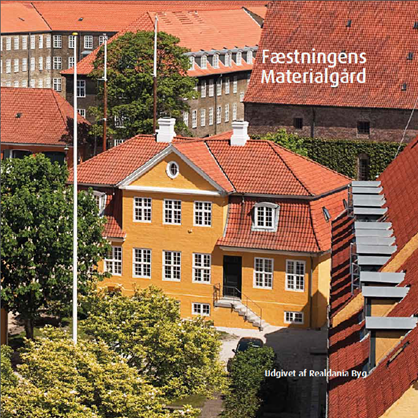
The Fortifications depot in Copenhagen
In the heart of Copenhagen, the Fortifications Depot encloses a little oasis with roses and magnolias. The complex, which has heritage status, stands along Frederiksholms Kanal, with Christiansborg Palace, the Kings Brewery, and the Royal Library as its nearest neighbors. In 2007, Realdania By Byg bought the Fortifications Depot from the Ministry of Defense, which had used the facility for more than 250 years.
Af: Jens Christian Varming og Birgitte Kleis (2012)
199,00 kr.
In the heart of Copenhagen, the Fortifications Depot encloses a little oasis with roses and magnolias. The complex, which has heritage status, stands along Frederiksholms Kanal, with Christiansborg Palace, the King’s Brewery, and the Royal Library as its nearest neighbors. In 2007, Realdania By & Byg bought the Fortifications Depot from the Ministry of Defense, which had used the facility for more than 250 years. Realdania By & Byg wanted to give this historical complex new life and a new purpose as an attractive rental property. In collaboration with the National Cultural Heritage Agency, the company also wanted to go new ways and make the Fortifications Depot part of the debate on efficient energy and the climate.
It was to be a demonstration project, aimed at showing how energy conservation can be applied to heritage buildings. The Fortifications Depot was chosen for this purpose because of its distinctive and diverse character, which provided a very broad perspective of the problems involved. The suitability of different measures for optimizing energy consumption and restoration techniques could be studied and tested in both Baroque and classicist buildings, in both brick and half-timbered structures. Over the years, the Ministry of Defense had moreover kept records of the buildings’ energy, water, and heat consumption, providing an incomparable wealth of data for the project. The publication of this book marks the end of the process of restoring the Fortifications Depot.
It also marks the start of the second phase of the project “Energy Conservation in Historical Buildings.” For an extended period, energy consumption will be measured and the results will be compared with figures from before restoration, taking 1990 as the baseline. Calculations show that as a whole, the expected CO2 reduction is 20 percent per workplace. What we can use today are the experiences gained from the restoration process. One is the necessity of rethinking how interiors are laid out and used, a process that meant reconsidering the entire complex’s floor plans several times. The result is more workplaces than first envisioned – an advantage for the owner, the tenant, the environment, and the architecture.
132 pages in danish and english, richly illustrated
